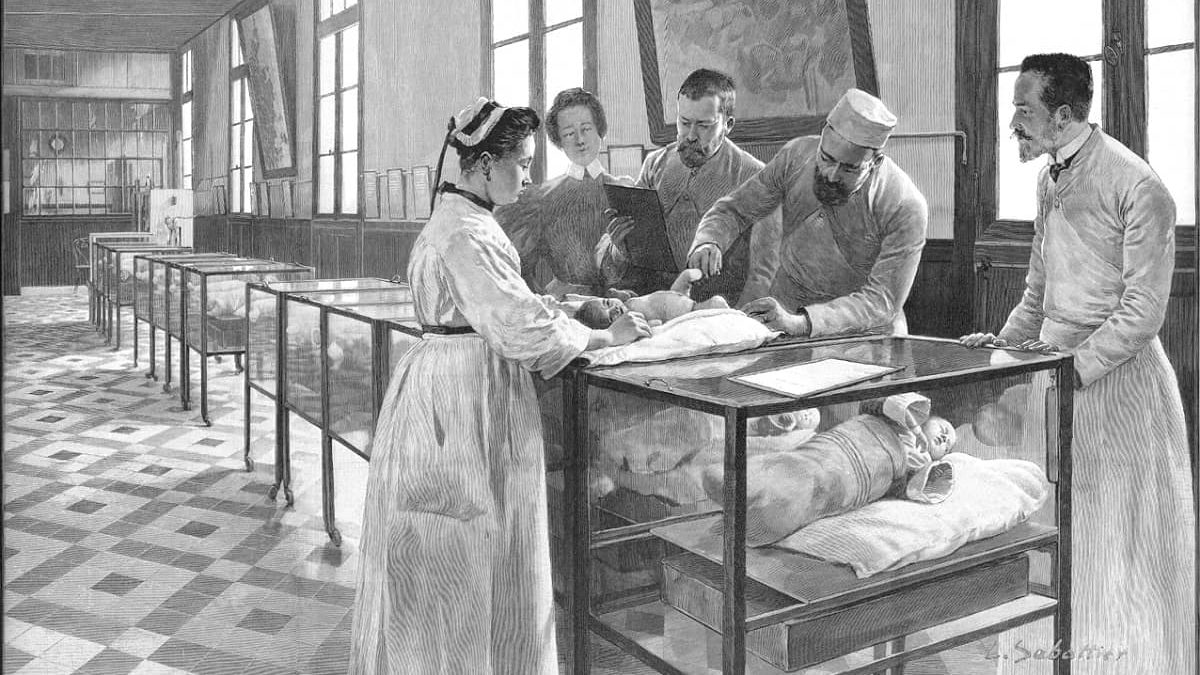Old age and birth are two contrasting phenomena in human life. In both cases, human physiology requires different research and care. Neonatology and gerontology are the sciences that study these two contrasting physiological states. Two fields that have done a great deal to reduce mortality and alleviate suffering.
Let’s learn about the history of neonatology and gerontology.
Neonatology
In the Western tradition, the first health care services related to late-term pregnancy were provided during the reign of the Roman Emperor Numa Pompilius between 715 and 672 BC, when the earliest evidence of cesarean section surgery was found. Soranus of Ephesus, a Greek physician who practiced in Rome from about 138–98 BC, wrote the earliest work on neonatal care. For the first time in history, forceps were invented in England in 1650 to pull the baby out of the womb if the birth did not progress normally.
By the early 18th century, studies on the ideal weight and height of the newborn baby were published, as were descriptions of specific diseases of newborns, such as duodenal atresia and Hirschsprung’s disease. Throughout the 18th and 19th centuries, many diseases in newborns continued to be described. In 1914, Michael Reese Hospital in Chicago opened an incubator unit to care for premature babies. Just one year later, at the International Panama Pacific Exposition in San Francisco, there was a special section with incubators.
In 1922, Dr. Julius H. Hess published Premature and Congenitally Diseased Infants, the first book on premature babies in the United States.
In 1930, the American Academy of Pediatrics was founded, and in 1946, Clement A. Smith published The Physiology of the Newborn Infant, the first textbook on neonatology in the United States.
In 1963, “invasive treatment of hemolytic diseases of the fetus by intrauterine blood transfusion” began.
The first specialty exams in the field of neonatology, which developed as a subspecialty of pediatrics, began to be held in 1975. Today, thanks to these advances, even babies born weighing 500 grams can be kept alive, even if many of them are born with mental and physical problems that they will not recover from for the rest of their lives.
Gerontology

On the other side, where the end of life is approaching, there is gerontology, which has witnessed great medical advances. The prolongation of the human life span has brought many problems with old age. Gerontology is the branch of science that deals with the diseases seen in the elderly and the economic and emotional problems caused by these diseases. Although many physicians try to apply Ockham’s razor in their diagnostic approach, geriatric diseases are generally characterized by “diversity, variability, and persistence”.
Therefore, it is often easier to make a complete diagnosis. With the aging of the American population, more research is needed to help the elderly in the treatment of mentally and physically devastating diseases such as dementia or Alzheimer’s disease. It is only recently that gerontology has been rapidly divided into fields of its own.
The fields of neonatology and gerontology exist to treat the weakest and most vulnerable among us. These fields are changing rapidly every day as we begin to understand the changes in human physiology at various stages of life. In these beginning and end stages of life, we also begin to change and become different. Even the signs of birth and death, which we think are immutable, change over time. The most important philosophical and moral issues of our time are also closely linked to medical advances.


